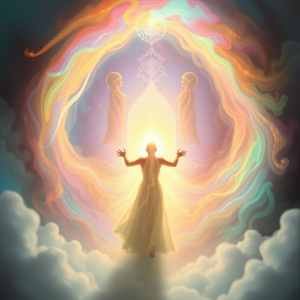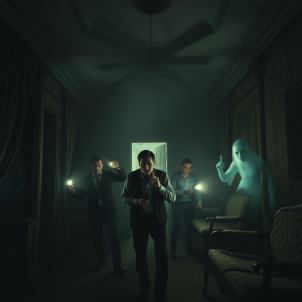
Near-Death Experiences (NDEs) have been a topic of fascination for decades, with many people claiming to have had a glimpse of the afterlife. These experiences, which often occur when a person is clinically dead or close to death, have sparked intense debate about the nature of consciousness and the possibility of life beyond the grave. In this article, we will delve into the paranormal implications of NDEs and explore what they might reveal about the afterlife.
What are Near-Death Experiences?
NDEs are complex phenomena that are characterized by a range of sensations, emotions, and experiences. Typically, a person who has had an NDE will report feeling a sense of peace and tranquility, followed by a sensation of floating or being pulled out of their physical body. They may also experience a tunnel vision effect, where they see a bright light at the end of a tunnel. Many people who have had NDEs also report encountering deceased loved ones or spiritual beings, who often communicate with them through a form of telepathy.
The Paranormal Implications of NDEs
One of the most significant paranormal implications of NDEs is the suggestion that consciousness can exist independently of the physical body. If NDEs are not simply the result of brain activity or hallucinations, then they may provide evidence for the existence of a non-physical aspect of human consciousness. This idea is often referred to as “dualism,” which posits that the mind and body are separate entities.
Another paranormal implication of NDEs is the possibility of an afterlife. Many people who have had NDEs report experiencing a sense of joy and peace that is beyond anything they have experienced in life. They may also encounter deceased loved ones, who often appear to be happy and at peace. These experiences suggest that there may be a continuation of consciousness after death, and that the afterlife may be a realm of great beauty and joy.
Theories About NDEs
There are several theories about NDEs, ranging from the scientific to the spiritual. Some scientists believe that NDEs can be explained by brain activity, such as the release of neurotransmitters or the stimulation of certain brain regions. Others propose that NDEs are the result of psychological or emotional factors, such as stress or trauma.
However, many people who have had NDEs believe that their experiences cannot be explained by science or psychology alone. They often report feeling a sense of connection to something greater than themselves, and may experience a profound sense of meaning and purpose. These experiences are often described as “transcendent” or “mystical,” and may be difficult to explain using conventional language.
Examples of NDEs
There are many documented cases of NDEs, each with its own unique characteristics and features. One famous example is the case of Pam Reynolds, who underwent a rare type of brain surgery called a “standstill” operation. During the operation, Pam’s body was cooled to a temperature of around 60°F, and her brain activity was slowed to a near-standstill. Despite being clinically dead, Pam reported experiencing a range of sensations and emotions, including a sense of peace and tranquility, and a feeling of being pulled out of her body.
Another example is the case of Dannion Brinkley, who was struck by lightning in 1975. Dannion reported experiencing a range of paranormal phenomena, including a sense of being out of his body, and encountering deceased loved ones. He also reported experiencing a sense of joy and peace, and a feeling of being connected to something greater than himself.
Conclusion
Near-Death Experiences are complex and fascinating phenomena that continue to capture the imagination of people around the world. While the scientific community continues to debate the nature and significance of NDEs, many people who have had these experiences believe that they provide evidence for the existence of a non-physical aspect of human consciousness, and the possibility of an afterlife. Whether or not NDEs can be explained by science or psychology, they remain a powerful and thought-provoking topic that challenges our understanding of the human experience and the nature of reality.


